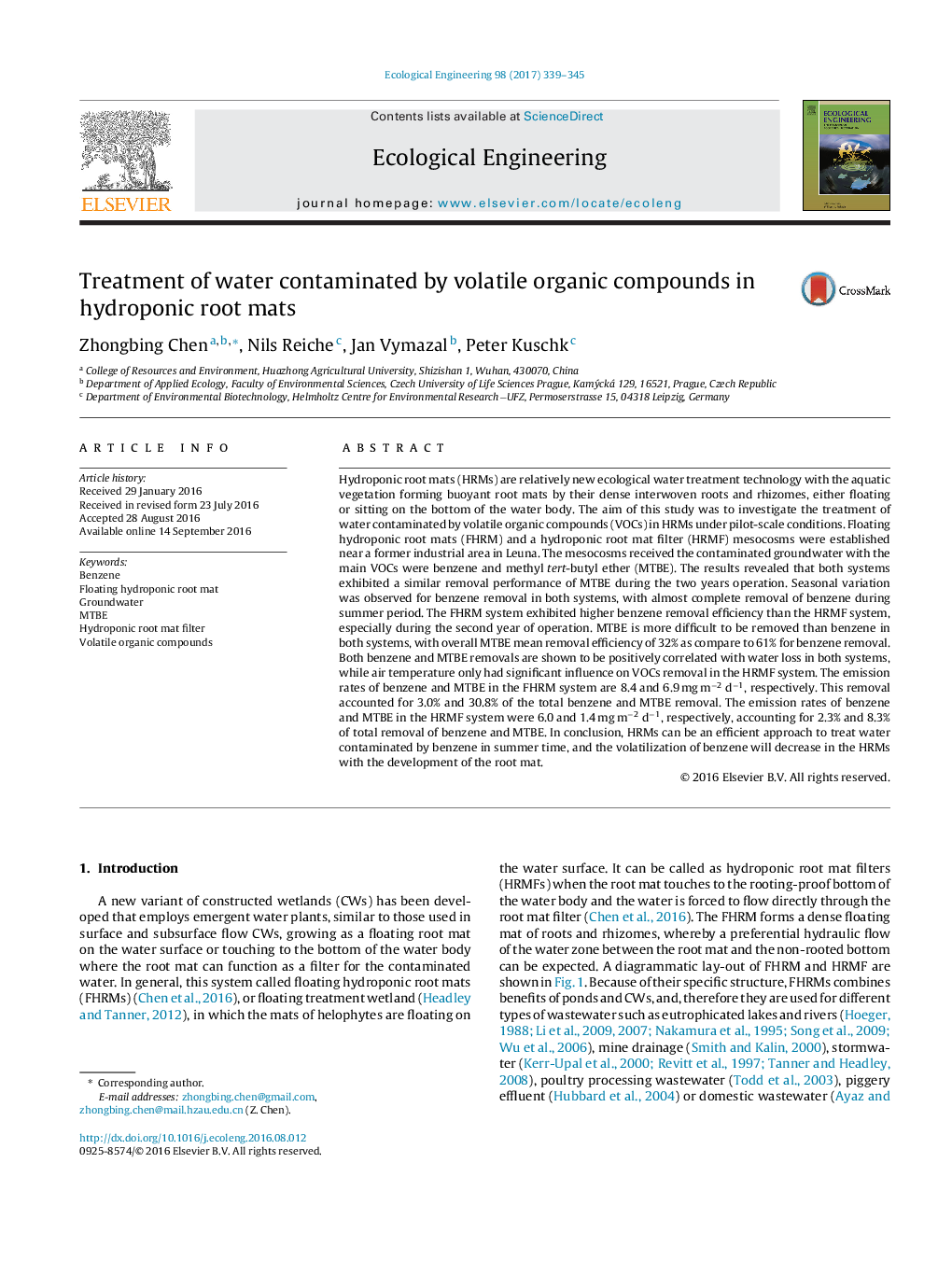| کد مقاله | کد نشریه | سال انتشار | مقاله انگلیسی | نسخه تمام متن |
|---|---|---|---|---|
| 5744035 | 1618001 | 2017 | 7 صفحه PDF | دانلود رایگان |
Hydroponic root mats (HRMs) are relatively new ecological water treatment technology with the aquatic vegetation forming buoyant root mats by their dense interwoven roots and rhizomes, either floating or sitting on the bottom of the water body. The aim of this study was to investigate the treatment of water contaminated by volatile organic compounds (VOCs) in HRMs under pilot-scale conditions. Floating hydroponic root mats (FHRM) and a hydroponic root mat filter (HRMF) mesocosms were established near a former industrial area in Leuna. The mesocosms received the contaminated groundwater with the main VOCs were benzene and methyl tert-butyl ether (MTBE). The results revealed that both systems exhibited a similar removal performance of MTBE during the two years operation. Seasonal variation was observed for benzene removal in both systems, with almost complete removal of benzene during summer period. The FHRM system exhibited higher benzene removal efficiency than the HRMF system, especially during the second year of operation. MTBE is more difficult to be removed than benzene in both systems, with overall MTBE mean removal efficiency of 32% as compare to 61% for benzene removal. Both benzene and MTBE removals are shown to be positively correlated with water loss in both systems, while air temperature only had significant influence on VOCs removal in the HRMF system. The emission rates of benzene and MTBE in the FHRM system are 8.4 and 6.9 mg mâ2 dâ1, respectively. This removal accounted for 3.0% and 30.8% of the total benzene and MTBE removal. The emission rates of benzene and MTBE in the HRMF system were 6.0 and 1.4 mg mâ2 dâ1, respectively, accounting for 2.3% and 8.3% of total removal of benzene and MTBE. In conclusion, HRMs can be an efficient approach to treat water contaminated by benzene in summer time, and the volatilization of benzene will decrease in the HRMs with the development of the root mat.
Journal: Ecological Engineering - Volume 98, January 2017, Pages 339-345
